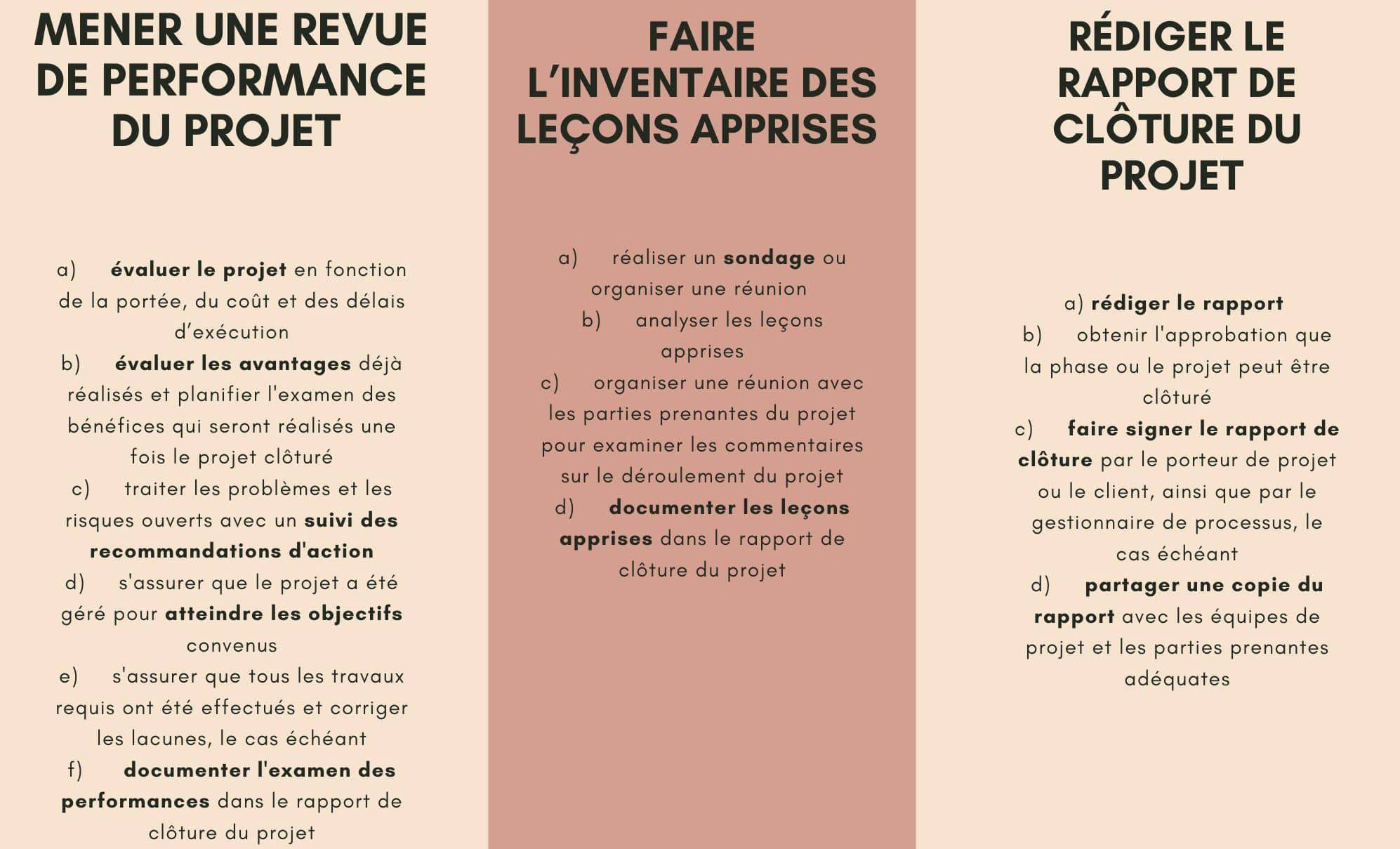Often overlooked, project closure is just as important as the other phases of project management. It is a lever for continuous improvement within the company. Why is this stage so important? What are the elements to consider when finalising a project? We take a look at best practice with Yvann Nzengue, engineer, trainer and project portfolio manager.

When the end of a project in which you've invested months or even years approaches, it can be tempting to rush to its official close. But rushing to the end of a project, whatever its size or sector of activity, will benefit neither you nor your company. teamlet alone your company. At the risk of losing the opportunity to :
- reassure stakeholders and formally indicate the next steps to be taken
- ensuring that the work is completed and passed on to production and maintenance
- benefit from the learning acquired during the project

On the other hand, when given proper thought and attention, project closure provides teams and organisations with valuable lessons that create value for them and can be applied to future initiatives. The result: improved processes, reassured customers and explicitly planned next steps.
That's why it's important to take care with the closing phase of a project. But there are a number of things to bear in mind.
1. Review the project transition plan
The first step to a successful conclusion is a review of the project transition plan. This is the time to tie up any loose ends and check that nothing has been forgotten. Draw up a complete transition plan to provide your successor - the team in charge of operations, for example - with the key information for a successful transition.
It is also an opportunity to check that project deliverables have been completed, transferred and correct any deficiencies. It is also an opportunity to ensure that the contractual work has been completed and to take any necessary corrective action. It is also an opportunity to ensure that all payments have been made or scheduled and that all products/services have been received.
This stage also provides an opportunity to review the transition tasks identified and the activity managers, and to document the project transition plan in the project closure report. Finally, it ensures that the transfer of knowledge to the transition team is complete.
| Task/ Activity | Criticality | Deadline | Person/ Team Responsible | Status | Notes |
2. Do a postmortem
A genuine tool for continuous improvement, the post-mortem is an essential stage in project management. It involves taking stock of all the stages of the project, the challenges encountered and the solutions found. The aim is to assess the project's performance, draw lessons from it and draw up a closing report.

3. Free up resources
Make sure that everyone involved in the project knows that the project is finished. Take this opportunity to congratulate them for the project and announce the next steps if there is still work to be done. In this way, the company can allocate resources to other projects with peace of mind.
In practice, the first step is to notify all the parties concerned of the end of the project, by e-mail for example. Then, formally close the project within the organisation according to its internal processes and release the project resources. Finally, ask the process manager to close the project code if necessary.
4. Archive documentation
You need to keep all the deliverables developed during the project. Not just closing deliverables, but all deliverables linked to the project, from initiation to closure. This data serves as a reference for future projects, as well as a training tool.
Another good practice is to use or set up a simple, useful, usable and secure archiving and backup system.
5. Celebrating the end of the project
This is the final stage in closing a project. Take the time to congratulate your team on a job well done. Celebrate your team's achievements. In this way, you are demonstrating the teamwork that has been achieved and reinforcing the development of the company culture.
The celebration can take many forms: a message of thanks, gifts, treats to share, breakfast, lunch or an aperitif. Take into account the preferences of each member of your team - you know them well! So consider the group dynamics of your team and choose the option that is most appreciated by everyone.
All the previous stages have been completed in full, and the next steps are clearly planned. You can now concentrate on your next project with complete peace of mind.
Key point: the closure phase should be undertaken shortly before or shortly after the official end of the project. It should not be too early, as this could result in the loss of key resources, which could then be allocated to other projects. Communicate your results, debrief with your team and congratulate yourself.





